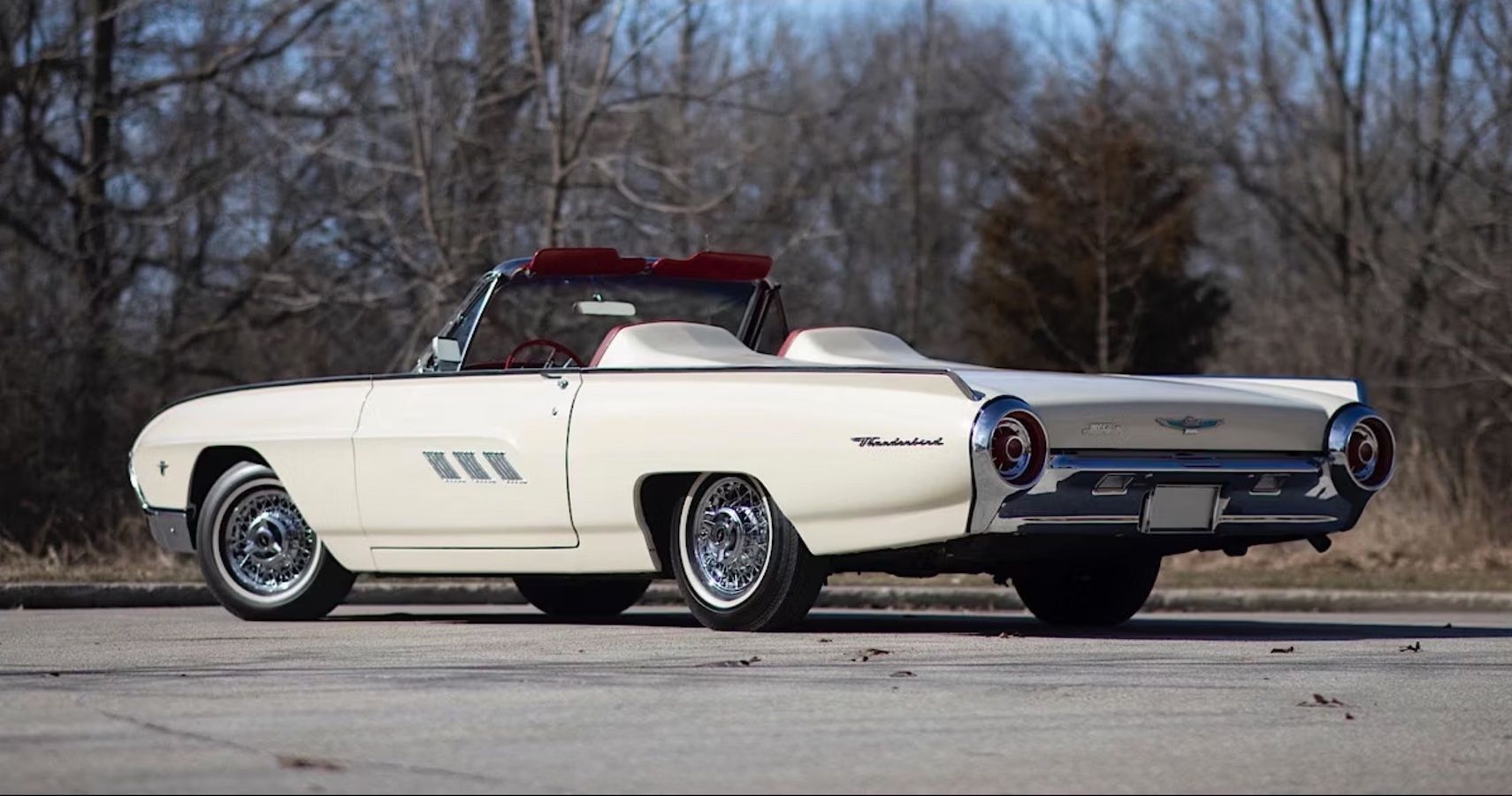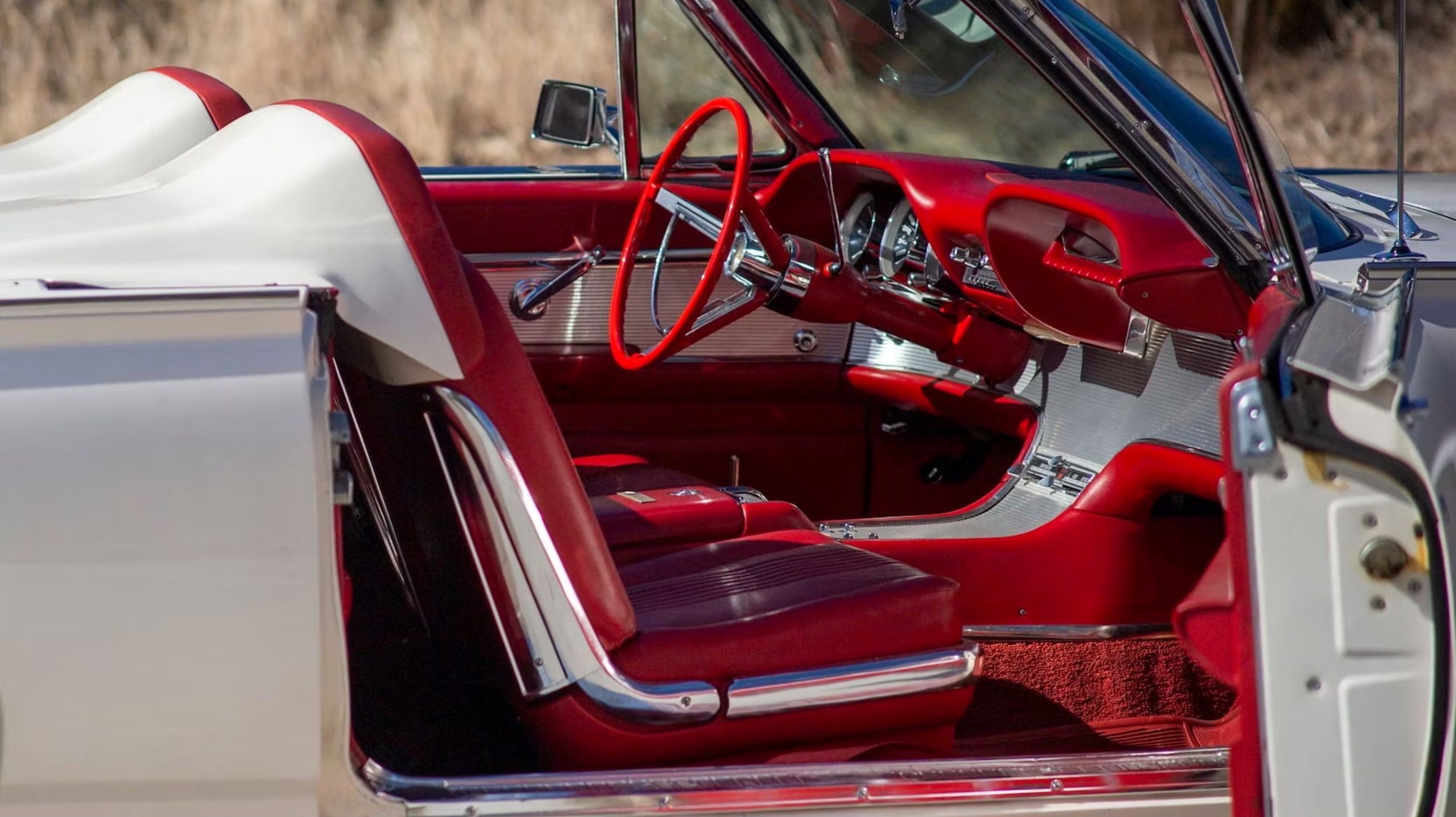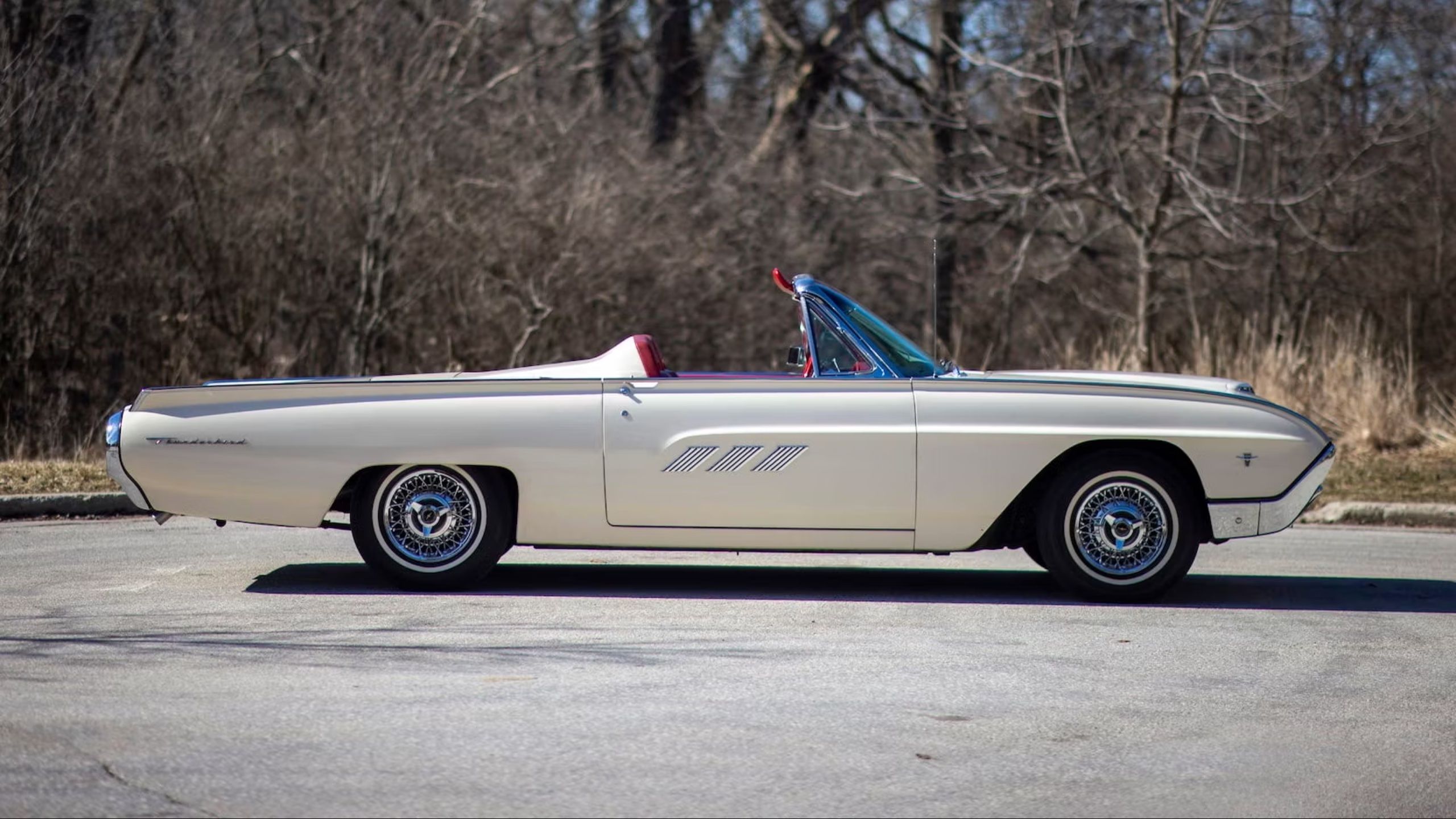The 1963 Ford Thunderbird Sports Roadster is a distinct and unusual rarity within the world of classic cars. To some, this might look like almost any other American car from this time period, but the simple notion of only having two seats in such a large car is what makes this T-Bird as iconic as it is impractical. By the early 1960s, the Thunderbird nameplate was beginning to take on a life of its own.
In fact, the name alone was so significant that Ford had even considered creating an entirely different division, dubbed as Thunderbird, as opposed to a mere model in the lineup. The Sports Roadster was an insane and frivolous exhibition of FoMoCo's faith in the T-Bird lineup, and even though it didn't sell very well, it continues to stand out to this day.
What Ford Was Trying To Accomplish With The Thunderbird Sports Roadster
The Thunderbird Sports Roadster was a distinct breed that was first introduced in 1961 for the 1962 model year. At this point in the model's history, the entire package had inflated fatter than a nitrous balloon at some rave in the 1990s. What was once a small, stylish roadster had since packed on the pounds in the name of sales potential. The main reasoning behind this factor is that the original Thunderbirds of 1955 through 1957 had proved to be quite popular for FoMoCo, and had easily outsold the competing Chevrolet Corvette during this initial run. In fact, 15,631 units were sold during the Thunderbird's first model year in 1955. In direct contrast, the Chevrolet Corvette only managed a run of 700 units that same year, despite the introduction of the legendary 265ci V8.
Interestingly, Ford had never initially advertised the Thunderbird as a sports car. Instead, they'd opted on using the term "personal car" to avoid the heavy criticism that was mercilessly inflicted upon its Corvette competitor. The strategy worked, but so did the car's somewhat cheaper price tag, and a legend was born. This success was eventually expanded upon for the 1958 model year, when Robert McNamara, then-president of Ford, realized that the key potential of the Thunderbird would be easily unlocked by adding a second row of seats in the rear. The strategy worked, causing sales to double over the newfound practicality. Consequently, the Thunderbird instantly became larger, heavier, and handling suffered due to the excessive girth. It's possible to consider the earliest Thunderbirds as sports cars, but by 1958, they were more accurately described as powerful cruisers. By the early 1960s, this theme would become even further expanded upon with a complete redesign for 1961.
Specifications On The 1963 Ford Thunderbird Sports Roadster
Robert McNamara's strategy of turning the Ford Thunderbird into a larger platform was in full bore by 1963, however, the designers had still sought to recapture some vague semblance of the model's original glory as a roadster during the mid-1950s. The Sports Roadster trim was essentially their solution to this, which was highlighted by the distinctive, fiberglass tonneau cover that was positioned across the rear seats, giving the illusion of a two-seat sports car. Illusion is not a term to be taken lightly to this strategy, as the entire package weighed in at a portly 4,563lbs. Not exactly the type of equipment you'd want for a cornering advantage, but to each their own. Power came from Ford's M-Code 390ci V8, which produced 300bhp and was mated to the Cruise-O-Matic 3-speed. This wasn't necessarily an improvement, as the F-Code Thunderbirds of 1957 were rated at this same figure via a Paxton supercharger, and were also substantially lighter than the 1963 lineup.
In an interesting side note, the 1962 version of the Thunderbird Sports Roadster, which was the first year of this package, had offered a set of Kelsey-Hayes wire wheels to further disguise this leviathan as a sports car. These wheels were actually the most expensive option on the entire trim package, weighing in at an extra $372.30 (a commanding $3,625.81 in 2022 dollars). Despite this, the wire wheels became highly problematic and had several issues holding air, as well as supporting the massive weight of the car itself. A notable incident involved none other than Elvis Presley, who found himself driving a Sports Roadster in 1962, when one of the wheels collapsed under heavy cornering. This sole incident had consequently caused Ford engineers to re-think the entire design after the faults of Elvis' Thunderbird made national headlines, which resulted in the majority of 1963 Thunderbirds to be sold with steel wheels.
The 1963 Ford Thunderbird Sport Roadster: What To Expect On The Market
Altogether, the entirety of the Sports Roadster versions was nowhere near as popular as Ford had envisioned back when this trim level was first unleashed in 1962. For that initial year, only 1,427 cars were sold, versus just 455 units for 1963. In short, the Thunderbird Sports Roadster was nothing more than a brief experiment on Ford's behalf to see if the public was willing to accept a dash of nostalgia, even after only a few years since they'd magnified the entire size of the T-Bird. Had they downsized the car itself, things could possibly have changed, although Ford had been focused on creating an entirely different form of small, performance-oriented car during this era, the Mustang. Even so, the T-Bird would only continue to grow in size, but with a more direct focus on luxury over performance, as evidenced by the four-door models that emerged in the late 1960s and carried on until 1972.
As a result of these low production figures, the value of the 1963 Ford Thunderbird Sports Roadster is definitely among the highest of the Thunderbird lineup for this timeframe. Depending on condition, these cars can be had at prices going up to the heights of the six-figure range, although some examples can be had for around $40,000. As always, a vast array of factors affect the overall pricing of classics, ranging from overall condition, originality, degree and quality of restoration, as well as historical significance.
Sources: Thunderbirdclub, Hemmings, Bring a Trailer



.JPG)
